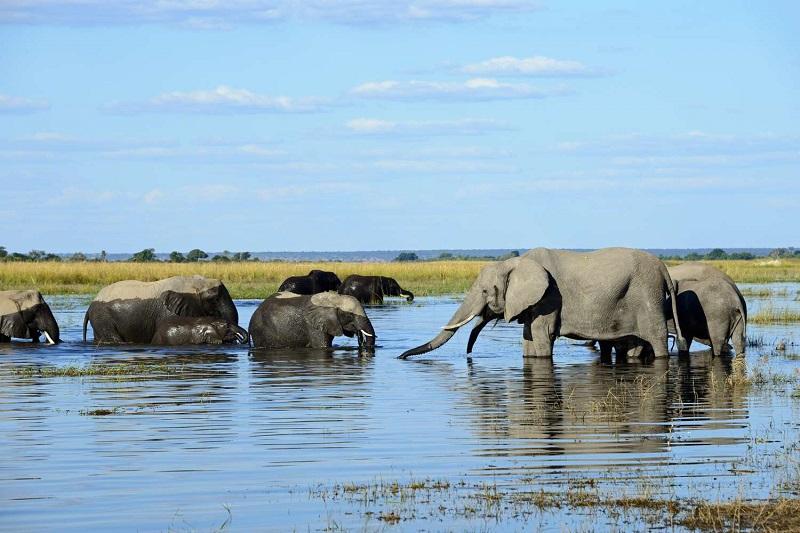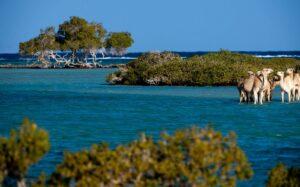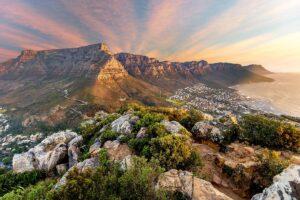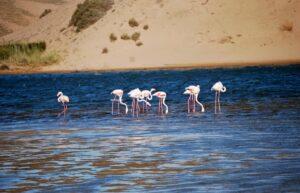Located in northern Botswana, Chobe National Park is one of Africa’s premier wildlife destinations. Covering 11,700 square kilometers, Chobe is renowned for its diverse ecosystems, which range from lush floodplains and dense forests to expansive savannahs. The park is particularly famous for its large elephant population, estimated to be the highest concentration in Africa.
Chobe’s rich biodiversity, stunning landscapes, and variety of wildlife experiences make it a must-visit destination for safari enthusiasts. This guide will provide an overview of Chobe National Park, its wildlife, the best time to visit, how to get there, and the various activities available to visitors.
Overview of Chobe National Park
Chobe National Park was established in 1967 and is Botswana’s first national park. It is named after the Chobe River, which forms its northern boundary and is a major lifeline for the park’s wildlife. The park is divided into four distinct ecosystems: the Chobe Riverfront, the Savuti Marsh, the Linyanti Marsh, and the Nogatsaa area.
The Chobe Riverfront is the most accessible and popular area, known for its spectacular game viewing, especially during the dry season when animals congregate along the river. The Savuti Marsh is famous for its predators, particularly lions and hyenas, and dramatic interactions between them and their prey.
The Linyanti Marsh, with its remote and pristine environment, offers a more exclusive safari experience with opportunities to see rare species such as the African wild dog. The Nogatsaa area, the least visited part of the park, provides a more secluded experience and is rich in birdlife and other wildlife.
Wildlife in Chobe National Park
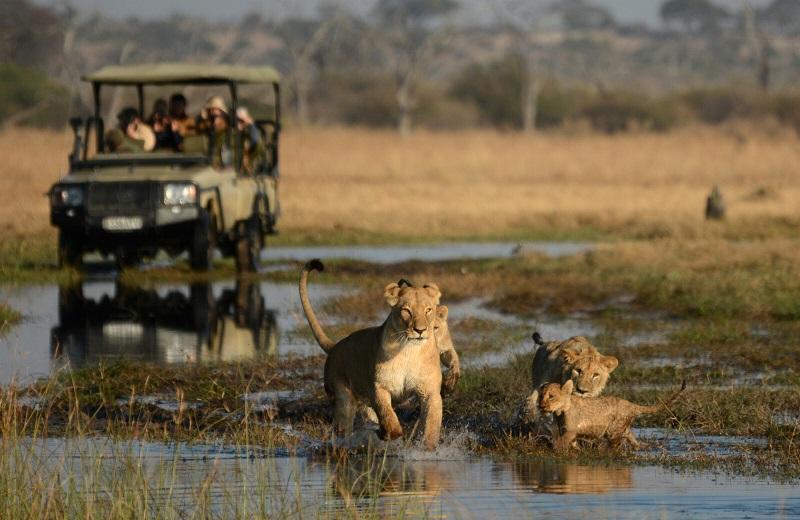
Chobe National Park is home to a remarkable diversity of wildlife, with some of the highest concentrations of game in Africa. The park’s elephant population is its most celebrated feature, with an estimated 120,000 elephants roaming its landscapes. These majestic creatures are frequently seen along the Chobe River, especially during the dry season when they come to drink and bathe.
The sight of large elephant herds against the backdrop of the river is one of the park’s iconic images. In addition to elephants, Chobe supports a wide range of other large mammals. Buffalos, zebras, giraffes, and various antelope species, such as kudu, impala, and sable, are commonly seen.
The park’s predator population includes lions, leopards, cheetahs, and spotted hyenas. The Savuti area, in particular, is known for its high predator density and dramatic wildlife interactions. African wild dogs, although rare, can also be spotted in Chobe, especially in the Linyanti region. Birdlife in Chobe is equally impressive, with over 450 recorded species.
The Chobe Riverfront is a birdwatcher’s paradise, offering sightings of species such as African fish eagles, kingfishers, herons, and storks. During the rainy season, the park’s wetlands attract a variety of migratory birds, adding to its avian diversity. The park’s varied habitats, from riverine forests to open savannahs, provide ideal conditions for a rich array of birdlife.
Best Time to Visit Chobe National Park
Chobe National Park is a year-round destination, but the best time to visit depends on what you want to experience. The dry season, from May to October, is the peak time for wildlife viewing. During these months, water sources become scarce, and animals congregate along the Chobe River and other permanent waterholes, making them easier to spot. The weather is also cooler and more pleasant for safari activities.
The wet season, from November to April, brings lush, green landscapes and an abundance of newborn animals. Although wildlife is more dispersed due to the availability of water, this season offers excellent birdwatching opportunities as migratory birds arrive in large numbers.
The wet season also sees fewer tourists, providing a more intimate and tranquil safari experience. However, some roads may be difficult to navigate due to the rains, and certain areas may be inaccessible.
Getting to Chobe National Park from Kasane
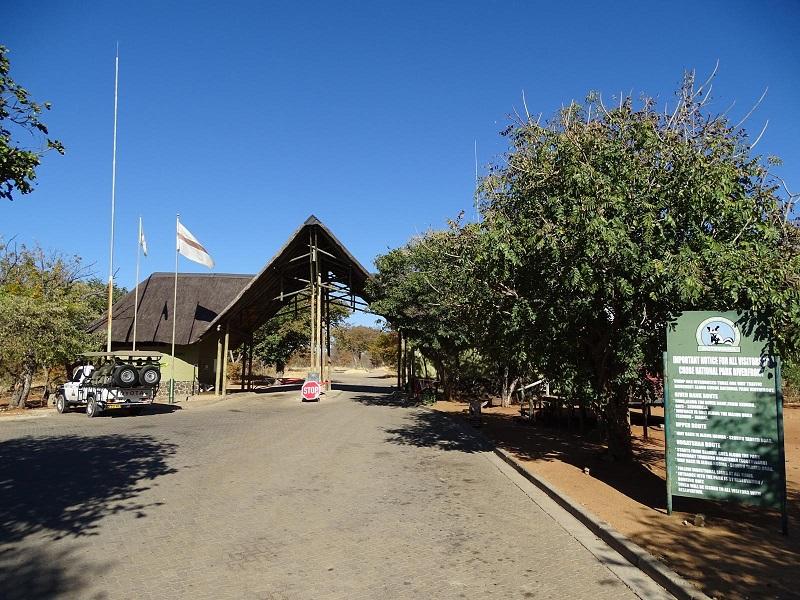
Chobe National Park is easily accessible from the town of Kasane, which is located near the park’s northeastern corner. Kasane is well-connected by road and air, making it a convenient gateway for visitors. The distance from Kasane to the park’s main entrance is approximately 10 kilometers, making it a short drive.
Kasane is served by Kasane Airport, which offers regular flights to and from Gaborone, the capital of Botswana, as well as other regional destinations such as Johannesburg in South Africa. From the airport, visitors can arrange transfers to their lodges or camps within the park. For those traveling by road, Kasane is connected to major routes from neighboring countries, including Namibia, Zambia, and Zimbabwe.
Self-drive safaris are popular in Chobe, and 4×4 vehicles are recommended due to the park’s sandy and sometimes challenging terrain. Alternatively, visitors can join guided tours or arrange game drives through their accommodations. Boat cruises on the Chobe River are also a popular way to explore the park and view wildlife from a different perspective.
Other Activities in Chobe National Park
Chobe National Park offers a variety of activities that cater to all interests and provide different ways to experience its rich wildlife and landscapes. Game drives are the most popular activity, allowing visitors to explore the park’s diverse ecosystems and encounter its abundant wildlife. Early morning and late afternoon game drives are particularly rewarding, as animals are most active during these cooler parts of the day.
Boat cruises on the Chobe River are another highlight, offering a unique vantage point for wildlife viewing. These cruises provide close-up encounters with elephants, hippos, crocodiles, and a variety of bird species. Sunset cruises are especially popular, as they combine excellent wildlife sightings with the beauty of the setting sun over the river.
For those seeking a more intimate connection with nature, guided walking safaris are available in certain areas of the park. These walks, led by experienced guides, provide insights into the smaller details of the ecosystem, including plants, insects, and tracks, and offer the chance to see wildlife on foot. Birdwatching tours are also available, with knowledgeable guides helping visitors spot and identify the park’s diverse birdlife.
Fishing trips on the Chobe River are an option for those interested in angling, with opportunities to catch species such as tigerfish and bream. Cultural visits to nearby villages can be arranged, providing insights into the local way of life and traditional practices. These experiences offer a deeper understanding of the region’s culture and the relationship between local communities and the park.
Park Fees for Chobe National Park
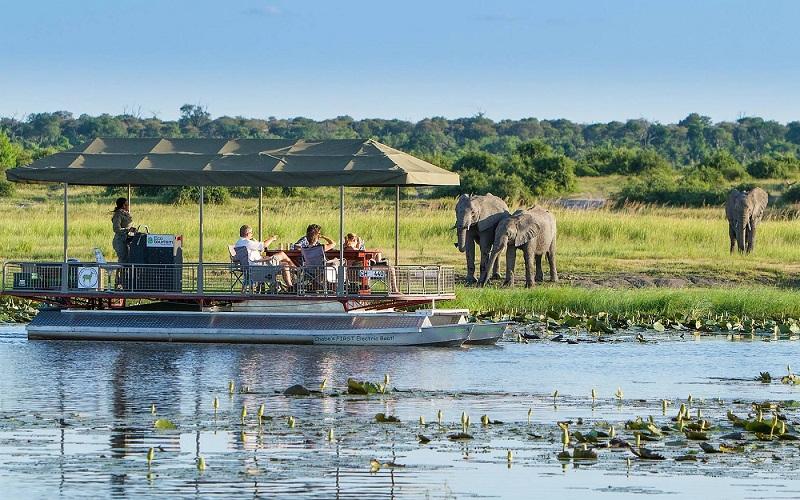
As of 2024, the entrance fees for Chobe National Park are as follows:
- Park Entrance Fee: $10 per adult per day for foreign visitors, and BWP 70 (approximately $6) per adult per day for Botswana citizens. Children under 16 years old pay a reduced fee.
These fees contribute to the conservation and maintenance of the park. Prices are subject to change, so it is advisable to check with the Botswana Department of Wildlife and National Parks or your tour operator for the most current information.
FAQs: Touring Chobe National Park
Do I Need a Car to Tour the Park?
Yes, a car is necessary to explore Chobe National Park, as it covers a large area and has diverse regions to visit. A 4×4 vehicle is recommended, especially for game drives and navigating the park’s sandy roads. Visitors can opt for self-drive safaris or join guided tours provided by lodges and tour operators.
Are Unguided Walks Allowed in the Park?
Unguided walks are not permitted in Chobe National Park due to the presence of dangerous wildlife, including predators and large mammals. Guided walks are available and recommended for those who wish to explore on foot, as they provide a safe and educational experience. Guides are knowledgeable about the local wildlife and can ensure visitors’ safety while offering insights into the park’s flora and fauna.
How Much is a Game Drive in the Park?
The cost of a game drive in Chobe National Park varies depending on the tour operator, duration, and whether it is a private or shared drive. Prices generally range from $30 to $100 per person for a half-day drive. Some lodges include game drives in their accommodation packages. It’s advisable to book game drives in advance, especially during peak tourist seasons, to ensure availability.
Conclusion
Chobe National Park is a destination of unparalleled natural beauty and wildlife diversity. A visit to this remarkable park promises an adventure filled with awe and wonder.
